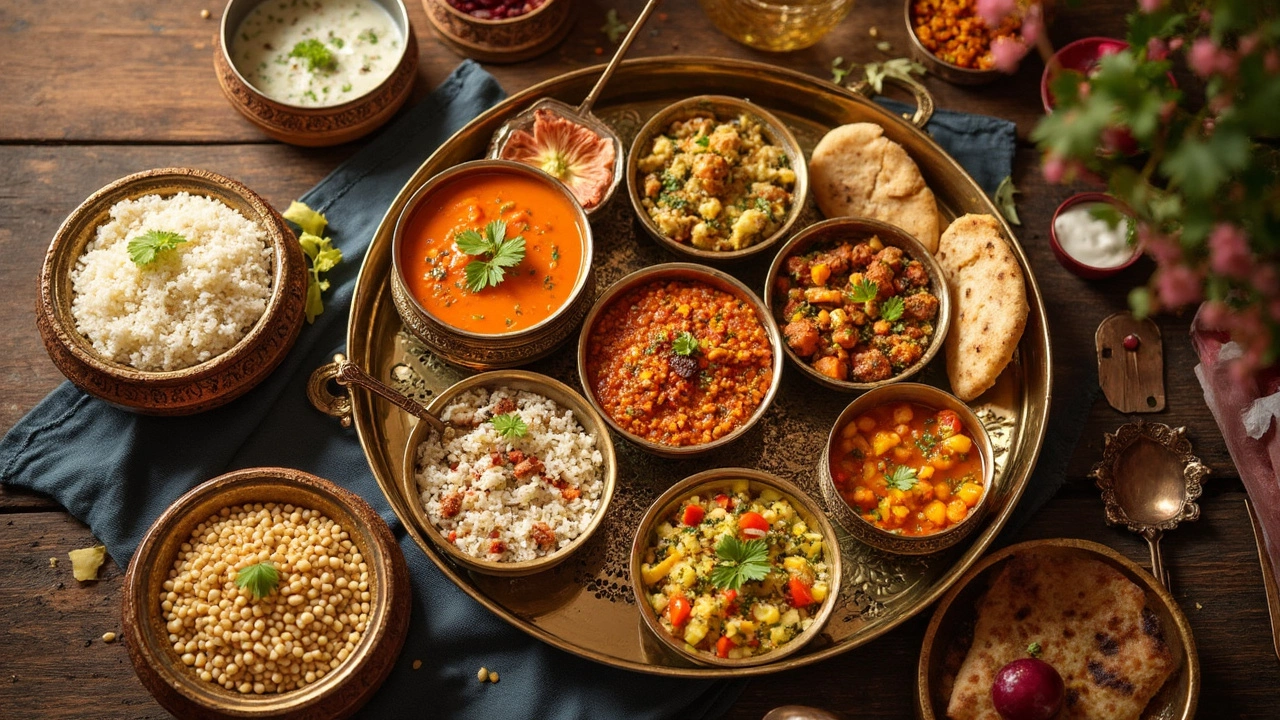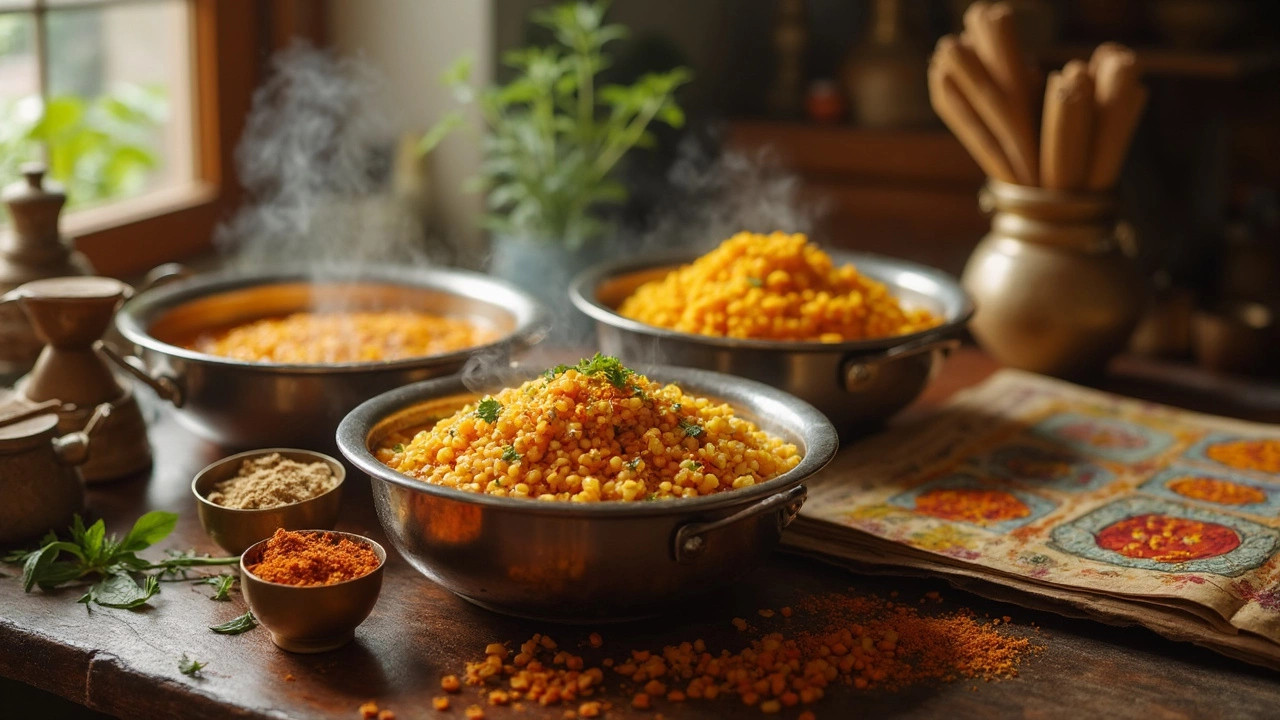If you've been looking for a way to spruce up your meals without spending hours in the kitchen, lentils might just be your new best friend. These little legumes are bursting with nutrition and there are countless ways to enjoy them, especially in the form of a delicious dal.
Let's kick things off with the reason why they're so awesome for your health. Lentils are loaded with protein, which is excellent for vegetarians and meat-eaters alike who want to get their protein fix without relying too heavily on meat. Not to mention, they're high in fiber, making them fantastic for digestion. Your tummy will thank you!
Want some tips on how to eat them for maximum health benefits? Cooking lentils can be super simple if you know the right tricks. For starters, always rinse them before cooking to get rid of any dust or tiny stones. And here's a neat tip: soaking lentils can actually cut down on their cooking time and may help with digestion.
- Lentils: A Nutritional Powerhouse
- Simple and Healthy Dal Recipes
- Cooking Tips for Maximum Nutrition
- Making Lentils Part of Your Daily Routine
Lentils: A Nutritional Powerhouse
Lentils are incredible when it comes to packing a nutritional punch. If you're looking to add something healthy to your meals, then lentils should definitely be on your list. They're low in calories but high in nutrition, making them perfect for anyone watching their diet.
Loaded with protein and fiber, lentils are a wonderful choice for boosting your daily intake of these essentials. In fact, just one cup of cooked lentils provides about 18 grams of protein and 16 grams of fiber. Plus, they're naturally low in fat, which is great news for heart health.
But that's not all. Lentils are also a fantastic source of essential vitamins and minerals. They contain iron, potassium, and folate, among others. Getting enough of these nutrients in your diet is crucial, especially if you're following a vegetarian lifestyle.
| Nutrient | Amount per 1 cup cooked |
|---|---|
| Protein | 18g |
| Fiber | 16g |
| Iron | 6.6mg |
| Folate | 358mcg |
What's truly unique about lentils is that they can play a big role in regulating blood sugar levels. Thanks to their low glycemic index, lentils help keep those pesky sugar spikes at bay, making them wonderful for people with diabetes or anyone trying to manage sugar intake.
And here's a bonus: they're super affordable! Whether you're on a budget or just love getting good value for your money, lentils provide amazing bang for your buck.
Simple and Healthy Dal Recipes
Cooking up a batch of lentils in the form of a dal is probably one of the easiest ways to pack in nutrition without much fuss. Plus, it can be super tasty. Want to get started? Here are some simple yet healthy dal recipes you can whip up in no time.
First, there's the classic Indian dal. Here's what you'll need: split red lentils, turmeric, garlic, cumin, and coriander. It sounds basic, but trust me, the flavor punches way above its weight. Just rinse 1 cup of red lentils and boil them with 2 cups of water and a pinch of turmeric. In a separate pan, sauté garlic and spices in a bit of oil. Combine the two, let it simmer, and you’re done!
How about a hearty lentil soup? Take 2 cups of lentils, add diced tomatoes, chopped carrots, and celery. Throw in a bay leaf, some thyme, and let it all simmer until the lentils are soft. This soup is not just comforting, it’s also packed with fiber and vitamins from the veggies.
If you're in a rush, try this speedy lentil salad. Boil 1 cup of brown lentils until tender, drain, and throw them in a bowl. Add chopped cherry tomatoes, cucumber, red onion, and a splash of lemon juice. Toss it together with a pinch of salt and you've got yourself a light, refreshing dish.
To make your meal planning easier, here’s a quick prep table for some basics:
| Ingredient | Amount | Cooking Time (min) |
|---|---|---|
| Red Lentils | 1 cup | 15 |
| Brown Lentils | 1 cup | 20-25 |
These recipes not only highlight the versatility of lentils but also how they can seamlessly fit into your healthy eating routine. Give them a try and enjoy the nutritious benefits!

Cooking Tips for Maximum Nutrition
Let's get into some solid strategies to make sure you're getting the most out of your lentils. Cooking them right can make a huge difference in retaining their nutrients.
First off, try to avoid overcooking. When lentils are cooked too long, they can lose their structure and some of their nutritional value. Aim for them to be just tender. Imagine them like pasta – you want them al dente, not mushy.
To bring out the best of these nutritional powerhouses, consider adding a squeeze of lemon or a sprinkle of fresh herbs like coriander at the end of cooking. This not only enhances flavor but might help with nutrient absorption, especially iron, thanks to the vitamin C in lemon.
Here's a quick checklist for maximizing those awesome nutrients:
- Soak Before Cooking: Soaking can cut down on antinutrients that block nutrient absorption.
- Boil in the Right Amount of Water: Too much water can leach nutrients. Use just enough to submerge them.
- Add Salt at the End: Adding salt early can toughen lentils' skins. Save it for the end to keep them soft.
- Spice it Up: Spices like turmeric and ginger not only amplify taste but also add health benefits of their own.
If you're interested in preserving even more of their goodness, try sprouting your lentils. Sprouted lentils can have increased levels of proteins and a reduced cooking time.
Making Lentils Part of Your Daily Routine
Incorporating lentils into your daily routine doesn't have to be a daunting task. It's all about finding simple ways to add them to meals you already enjoy. Whether you're a culinary wizard or a kitchen newbie, there are easy methods to blend lentils into your diet seamlessly.
Start by adding them to salads. Imagine a bright, crunchy garden salad topped with cooked lentils for added protein and texture. Just cook them, let them cool, and toss them in. It’s a quick fix that takes your salad game to a new level.
If you’re a fan of soups, you're in luck. Lentils make a hearty addition to almost any soup recipe. Whether it's a robust tomato soup or a classic vegetable mix, lentils blend well and enhance the nutritional value. You might even get hooked on how much they improve the flavor profile.
For those who enjoy a good breakfast, consider including lentils as a side dish. Try a lentil hash or mix them with spices to serve alongside your usual eggs or toast. It’s a high-fiber, high-protein start to your day without too much fuss.
Additionally, think about substituting lentils in dishes you already love. Swap out rice in a stir-fry or beans in tacos. Lentils cook quickly and absorb flavors superbly, making them an adaptable choice for various cuisines.
Here's a fun fact to seal the deal: lentils are a low-glycemic index food, which means they help regulate blood sugar levels. This makes them a smart choice for anyone watching their carb intake. Plus, at about 230 calories per cooked cup, they're a low-calorie ingredient that keeps you full longer!
Embrace your creative side in the kitchen, and you'll find that lentils can become a delightful staple in your meals. So go ahead, give these little legumes a chance, and transform your daily eating habits into a healthier routine.
